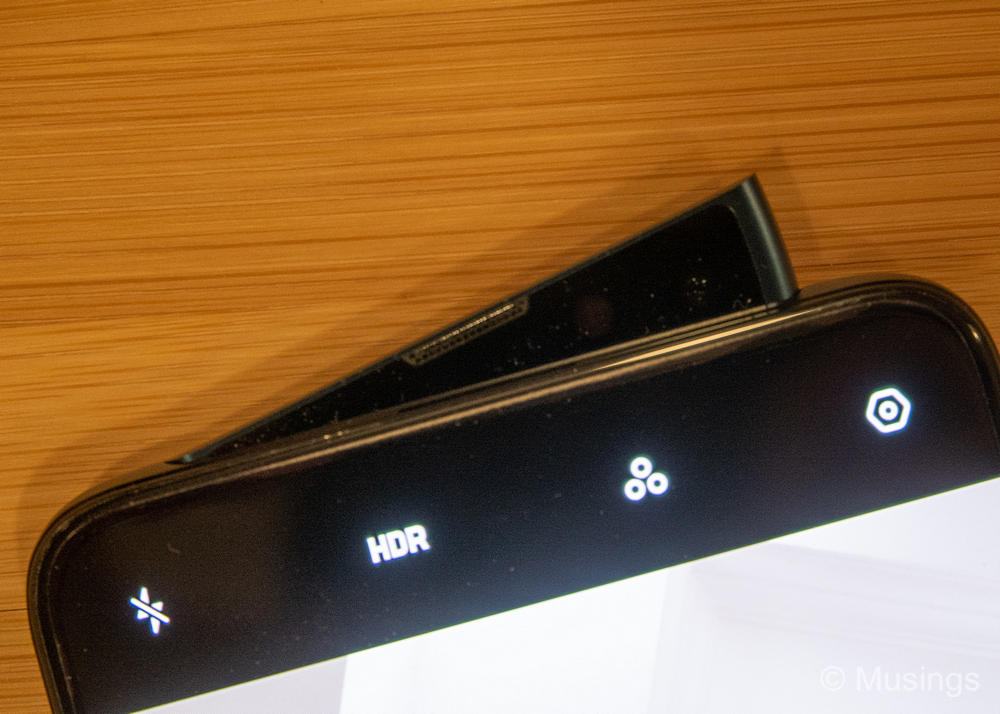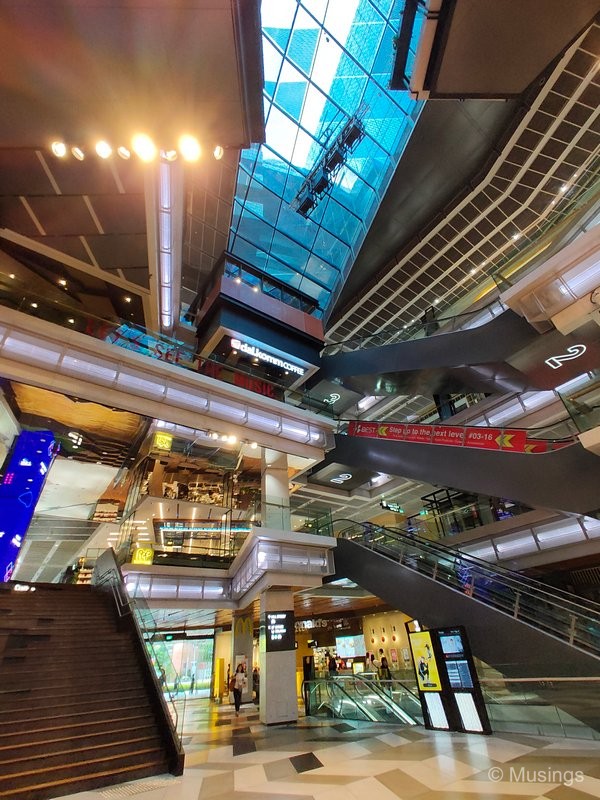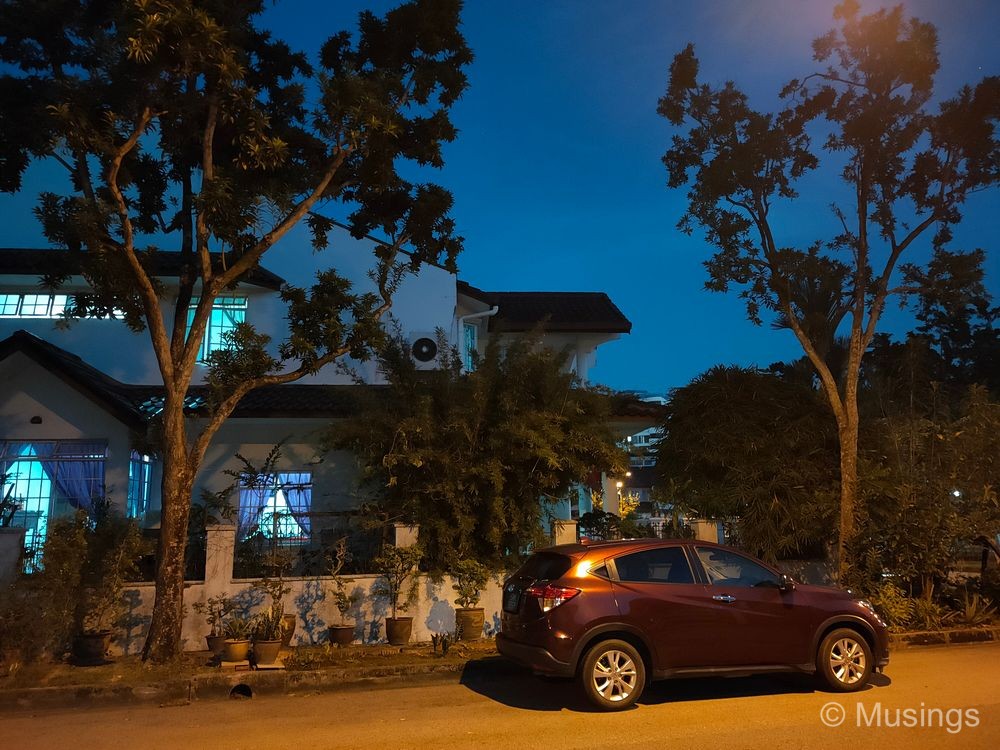Continuing from my previous posts: here, here and here.
Those incredible, bezel-less displays these days on a number of manufacturer flagships come at the cost of a design compromise: their front-facing selfie cameras now have to go elsewhere. The rapid evolution and continual relocation of the selfie camera in the last one year has been quite interesting to observe. Starting a year ago, we saw phones which kept the camera where it traditionally has always been – at the front – but they also now wrapped the display around the camera lens element. The notch where the lens sat gradually got smaller, leading industry to coin a new term – tear drop. Then a pair of Chinese phone manufacturers got the drop on its competitors by putting out two phones that were just about as full-screen as you can get: the Oppo Find X, and the Vivo Nex. These designs, including the Oppo Reno 10x Zoom’s, all solve the dilemma the same way: make the selfie camera pop-up on demand, and retract it back when it’s not needed.
The implementation on this Oppo Reno has garnered a lot of praise. Manufacturers with bezel-less cameras have at this point largely implemented their selfie cameras as a small squarish pop-up unit at the top of the unit. The Reno does it, broadly, the same way: except that the pop-up module is now larger, and shaped like a shark fin. The general consensus is that the shark fin doesn’t look just different, it’s funky and super cool. And the size of the module has another apparent benefit: it’ll be less prone to breakage if the phone slipped out of your hand and the camera can’t retract the pop-up in time before the phone kisses concrete.

Not that I’ve put my Oppo Reno to this drop test yet of course, nor do I have any intention to. But it sure is fun to see the camera pop-up to do a quick face login when I wake my phone up from sleep. In fact, the entire mechanism pushes the camera out so quickly and retracts it when done, all silently, I don’t even notice it anymore.
All that said though, the shark fin implementation finally doesn’t affect my usage of camera very much, since I don’t take selfies to begin with. The Oppo Reno could have just as well implemented its pop-up camera as a square or even round module, and it wouldn’t have made a difference to me haha.
The main camera at the back of the phone is where I had more interest in, on account that my Samsung Note 9 has set my expectations very high in this aspect. The summary comparison comment is this: the Oppo Reno does a few things better – with the up to 5x zoom optical zoom actually useful and taking as decent a picture as you can get on smartphones, and the camera software implementation is less convoluted than Samsung’s – but the Note 9 does everything else better, including 4K footage, and support for RAW.
To begin, the specs of the rear imaging sensor – a Sony IMX 586 48MP ultra-clear unit – is apparently of the same type used on the Huawei P30 Pro, a phone whose camera is also capable of equally crazy long optical and digital zoom levels. The Oppo Reno deploys the type of multi-camera array that’s currently the rage of phones: there’s a semi-wide normal angle, an ultra-wide, and the aforementioned telephoto. The normal angle is a 26mm equivalent – the same as the Note 9, but shoots at an aperture of f1.7, while the Note 9 does f1.5. No – that kind of f-stop difference is significant, especially considering the small sensors these phone cameras use.
The so-called ‘periscope’ camera on these phones though are largely a gimmick for me. Firstly, the Oppo Reno goes up to 5x optical zoom, after which digital zoom kicks in. Secondly, the 60x digital zoom can indeed let you take pictures of objects from incredibly far distances. But honestly, there’s so much image degradation at this point you’d likely going to use those images for social media posts only, and resized ones even at that. That said, the 60x does really permit you to view objects from far away – you know, like if you used a pair of binoculars.
On the other end is the ability to shoot at 16mm, though – as many reviewers have also remarked – unfortunately only usable for stills and not video. That aside, the ultra-wide setting has been very useful for my uses, since outside vacations I rarely lug my Sony FE 16-35mm f4.0 for casual photography, preferring to bring one of my smaller primes. No, I’m not going to get the same resolution nor range compared to what a full-fledged full-frame camera can dish out, but the shots taken at 16mm on the Oppo are still fine for posting on social media.
Two quick comparisons between the 26mm and 16mm wide-angles, and at the newly refurbished Funan SG mall:




The quality of the 4K video is of particular concern, since I take a lot of videos, casually, of our kids. The Oppo Reno’s 4K 30 and 60fps footage seem about comparable to the Note 9’s in sharpness and colours, and it also supports the H.265 codec – hooray! But the video stabilisation doesn’t seem nearly as effective as the Note 9’s. I was able to get decent enough 4K videos off the Note 9 while shooting and walking: I get more jitter from the Oppo Reno when I try to do the same. Not that this is finally unsolvable of course: I just have to walk more slowly and steadily hold the phone. But still.
Another little feature the Samsung Galaxies present is how you can start up its camera. Basically, I just press the power button twice in quick succession, and the phone immediately wakes up from sleep and launches into the camera app without needing a log-in. No such exists on the Oppo. I need to wake the phone, log-in (either by fingerprint or face recognition), then tap the app icon on the home screen to launch the camera app. This, from my sense of it, is finally still a software feature so there’s no reason it can’t be implemented via software update on the Oppo. That is, unless Samsung has a some kind of patent for a power-button launch of the camera app.
Finally, much ink has also been spilled elsewhere about the night photography modes on these new phones across the mainstream manufacturers. The Oppo Reno has the same and it’s called Nightscape here. I haven’t yet given this feature much of a whirl yet, but based on a few test shots I’ve done in the evening, I do get somewhat well-exposed photos in this mode, with reduction of highlights and lifting of shadows in the JPG. However, I can just as easily get the same quality from the Note 9 when I post-process its .DNG photos – which brings me to the biggest limitation on the Oppo, imaging wise – it can’t take photos in RAW. Aggghh!!! Both the S8+ and Note 9 were capable of that, and the omission on the Oppo Reno makes it hard for serious photography enthusiasts to get the most leverage out of photos from the otherwise very capable imaging sensor.

That’s a wrap for my serious of posts on the new Oppo Reno 10x zoom. Compared to the Note 9, it feels just that bit even more quick, has an amazing screen even though it’s a lesser display, and has an OS layer that’s more customisable. And the 256GB onboard storage is more than sufficient for my use, even when on long vacations. I’d need to work around the less effective stabilisation when taking 4K videos, and the absence of RAW support is a huge deal for me too: I’d need to take that bit more effort to ensure that the JPGs that come out from the Oppo Reno are already fairly decent to work with since I no longer have the RAW files to recover from my usually slipshod picture-taking technique when using camera phones. On the overall, I like the phone a lot, and reckon most users will be happy with it!
Recent comments